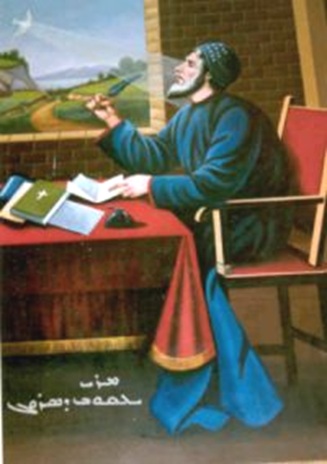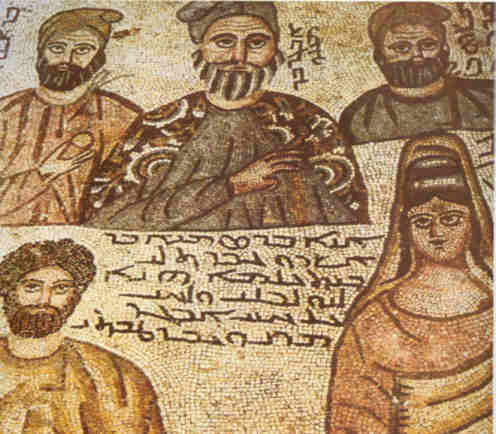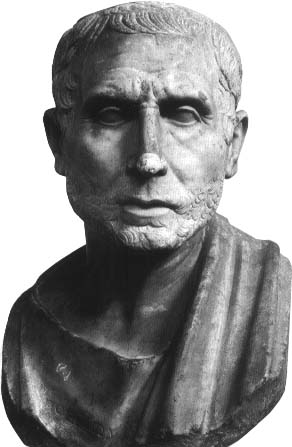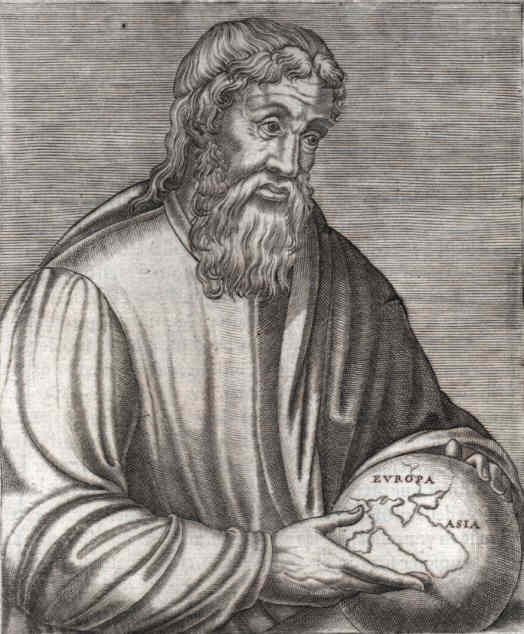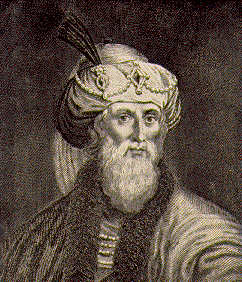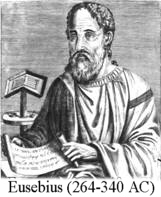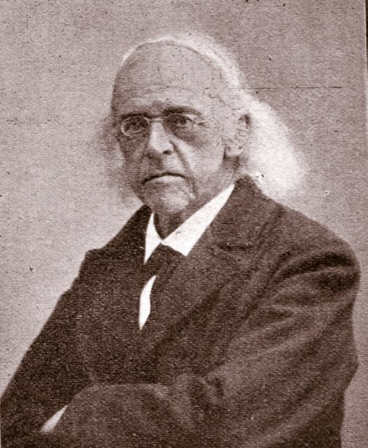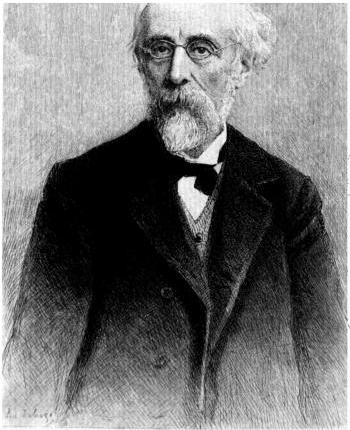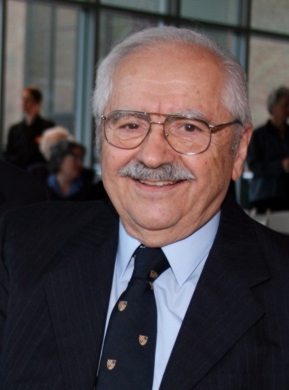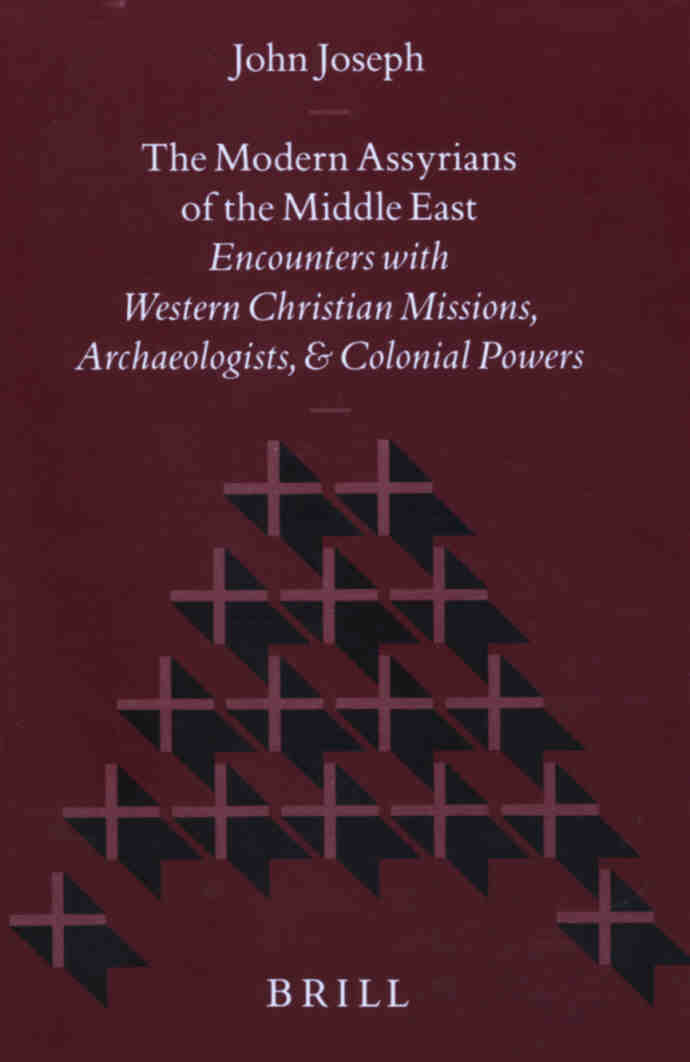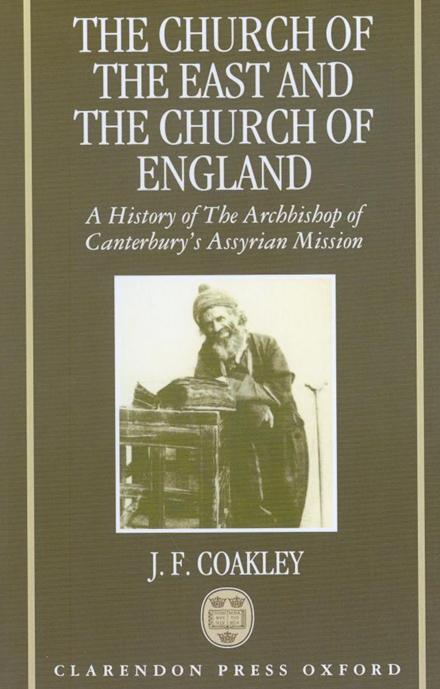|
Jacob of Sarug
Who made the East- Aramean Nestorians known as "Assyrians"?
SUA/WCA and allowing terrorism
Aramean history, history, culture and language, a six partite interview
26-6-2007: Aram Nahrin: the Aramaeans, the Bible, Christianity, and the West
27-6-2007: Aramaic: the Millennia Long Trajectory of the Global Language
28-6-2007: Gabriel Sengo opens the Gates of Aramaean Thought, Culture and Wisdom
2-7-2007: Do not Call the Illustrious Nation of Aramaeans by the Misnomer 'Assyrians'!
2-7-2007: Extermination of the Aramaean Nation: Results of an Anglo – French Plan
(Photo: wikipedia.org) The Historian Poseidonios from Apamea (ca. 135 BC - 51 BC), was a Greek Stoic philosopher, politician, astronomer, geographer, historian, and teacher. He says: " "The people we Greek call Syrians, they call themselves Arameans" From: See J.G. Kidd, Posidonius (Cambridge Classical Texts and Commentaries, 1988), vol. 2, pt. 2, pp. 955-956)
(Photo: wikipedia.org) Strabo (born 63 BC or 64 BC, died ca. 24 AD), a Greek historian, geographer and philosopher is mostly famous for his Geographika ("Geography") He says: "Poseidonius conjectures that the names of these nations also are akin; for, says he, the people whom we call Syrians are by the Syrians themselves called Arameans." (From: The Geography of Strabo, translated by Horace Leonard Jones and published in Vol. I of the Loeb Classical Library edition, 1917, Book I, Chapt. 2, 34)
(Photo: http://www.ccel.org) Flavius Josephus (c. 37 – c. 100 AD (or CE)) was a 1st century Jewish historian and apologist of priestly and royal ancestry who survived and recorded the Destruction of Jerusalem in 70 and later settled in Rome. He says: ""Aram had the Arameans, which the Greeks called Syrians."" (From: Antiquities of the Jews, translated by William Whiston in 1737, Book I, Chapt. 6)
Eusebius of Caesarea (c. 275 – May 30, 339), was a bishop of Caesarea in Palestine and is often referred to as the father of church history because of his work in recording the history of the early Christian church. He says: ""and from Aram the Arameans, which are also called Syrians" (From: Sebastian Brock, "Eusebius and Syriac Christianity," in Harold W. Attridge and Gohei Hata, eds., Eusebius, Christianity, and Judaism (Leiden 1992), p. 226)
Abu Al-husayn 'ali Ibn Al-husayn Al-mas'udi, born 895 in Baghdad [Iraq] and died 957 in al- Fustat [Egypt], was a historian and traveler, known as "the Herodotus of the Arabs.” He was the first Arab to combine history and scientific geography in a large-scale work. On Tur Abdin he says: "Tur Abdin is the mountain where remnants of the Aramean Syrians still survive." (From: Michael Jan de Goeje: Bibliotheca Geographorum Arabicorum III, Leiden 1906, 54, I)
Prof. Dietrich Hermann Hegewisch born Dec. 15, 1746 in Quakenbrück [Germany] and died April 4, 1812 in Kiel, was a prolific german historian at the University of Kiel with a wide span of interests. He says: "Do not the Syrians, as they are usually called, or the Arameans, as they in fact are termed, deserve more attention in world history than they are usually given?" (From: D.H. Hegewisch: Die Aramäer oder Syrer; ein kleiner Beitrag zur allgemeinen Weltgeschichte, Berlinische Monatschrift, 2, 1794, p. 193)
On Page 197 he says: "The names Syria, Assyria, Mesopotamia, Babylon, etc. stem from the Greeks, who were not familiar with the true geography of these lands when the names first started to be used. Later, partly because of continuing ignorance and partly because of convenience despite having accurate knowledge, they persisted in using them since it would have required something of an effort to give up the old, familiar names and divisions of the countries and switch to the new ones, even if they were more accurate. The old, true, and single name of these lands is Aram; it is mentioned numerous times in the Bible of the Old Testament, and Greek scholars were also familiar with it and probably described the population of these areas as Arameans, though seldom, as they usually continued to use the term Syrian, which had been familiar to the Greeks."
On page 307 he says: "The Syrians or Arameans were not merely a numerous and large people, they were also a much cultivated people."
(Photo: http://portrait.kaar.at) Prof. Theodor Mommsen born Nov. 30, 1817, Garding, Schleswig [now in Germany] died Nov. 1, 1903, Charlottenburg, near Berlin, was a German historian and writer, famous for his masterpiece about the History of Rome. He received the Nobel Prize in Literature in 1902. He says: "the history of the Aramaean or Syrian nation which occupied the east coast and extended into the interior of Asia as far as the Euphrates and Tigris" (From: The History of Rome, written between 1854 and 1856, Leipzig, by Theodor Mommsen, Book First, Chapter One) "the Arameans defended their nationality with the weapons of intellect as well as with their blood against all the allurements of Greek civilization and all the coercive measures of eastern and western despots, and that with an obstinacy which no Indo- Germanic people has ever equalled, and which to us who are Occidentals seems to be sometimes more, sometimes less, than human." (ibid, Book Third, Chapter One)
(Photo: wikipedia.org) Prof. Theodor Nöldeke born March 2, 1836 in Harburg near Hamburg, died December 25, 1930 in Karlsruhe, was the leading german semitic scholar, who studied at Göttingen, Vienna, Leiden and Berlin. He says: "The main body of the population of all these wide landscapes from the Mediterranean Sea to beyond the Tigris belonged to a certain nationality, that of the Arameans." (From: Th. Nöldeke: Assyrios Syrios Syros, in Zeitschrift für klassische Philologie, Hermes 5, Berlin 1871, p. 460)
On page 461 he says: "It is well understandable that people have started to transfer the name of the country to the most important nationality and so the name 'syrian' was apprehended ethnological and was equated with 'aramaic'."
On page 468 he says: "Since the times of Alexander [the Great], if not already somewhat earlier, people have started to transfer the name of the Syrians exclusively over the prevailing in Syria nationality, and in this way this originally political-geographical term became an ethnological one that was identified with the local Arameans."
"From the time the Greeks came to have a more intimate acquaintance with Asia, they designated by the name of Syrians, the people who called themselves ´Arameans’.” (From: Th. Nöldeke, Kurzgefasste Syrische Grammatik (Leipzig, 1880), p. XXIX)
"Regarding the name of this nation and its language is the original 'Aramean’ in essence also the only one [sic], that for the employment of the present-day scholarship as yet strongly fits.” (From: Th. Nöldeke, "Die Namen der aramäischen Nation und Sprache,” in Zeitschrift der Deutschen Morgenländischen Gesellschaft 25 (1871), p. 131)
(Photo: www.doaks.org) Karl Eduard Sachau born 20 July 1845 and died 1930 was a German orientalist. He was 1872 professor at the University of Vienna, and in 1876, professor at the University of Berlin, where he was appointed director of the new Seminar of Oriental languages in 1887. He is especially noteworthy for his work on Syriac and other Aramaic dialects. He says: "The nation of the Arameans: This national name later, mainly in consequence of Jewish-Christian literature influences, gave way to the Greek designation Syrians." (From: Verzeichnis der Syrischen Handschriften der königlichen Bibliothek zu Berlin von Eduard Sachau 1. Abteilung, Berlin 1899, Vorrede I)
|
Aramean people: Aramean people (not to be confused with ‘Armenians’) speak Aramaic, the language spoken by Abraham, Moses and Jesus. They are the indigenous people of what was called in ancient times Aram- Nahrin, in our days it is called ‘Mesopotamia’. Some Arameans today identify themselves with “Assyrians”, because of the spiritual colonial hate generating activities of the Western missionaries and diplomats in the Middle-East in 16th and 19th centuries. Other Arameans became known as “Chaldeans”. However all of them are Arameans.In Turkey, the Arameans are called: Süryani. In Arabic they are called Al- Suryan.
Progenitor of Wars and Tyrannies: the Falsehood of Pan-Arabism (28-6-2004)
The deep and hidden reason of the tyrannical oppression practiced throughout the Middle East is the imposition by France and England of pan-Arabic nationalist cliques that intend to dictatorially arabize the various peoples of the Middle East, who are – all – not Arabs.
By Prof. Dr. Muhammad Shamsaddin Megalommatis, Orientalist (Published on amongst others: http://www.politicsforum.org/forum/viewtopic.php?t=25086
To start with basic, we should stress the point that among the member-states of the so-called Arab League there is not a single one inhabited by Arab population. In this regard, the simple and single historical truth in this is that there are no Arabs at all. There are only ‘Arabic-speaking’ peoples having striking dissimilarities one from another, and they all have different past, different cultural backgrounds, different social and behavioural systems, different orientations and archetypes. Only failure is guaranteed in any attempt to shape up a ‘union’ among these so disparate elements and peoples.
We have all attested numerous similar examples of disunion, mutual disparagement and unprecedented co-vilification so paradigmatically performed by the uneducated and uncultured ‘leaders’ of the ‘Arab’ League. The mistake was to view all that as ‘fratricidal’ situation, whereas it is not, since they are very disparate and divergent from one another. It is only the paranoiac and contra-natural regrouping named ‘Arab’ League that, by creating the shock of bringing together elements that just cannot be together, generates the unpleasant atmosphere in which all these funny and clownish ‘leaders’ are engulfed, without knowing why ‘this’ happens to them! So pathetically ignorant they are. If this concerned only these grotesque characters of the present day political Commedia dell’ Arte, the problem would be limited, and no one would need to discuss and tackle it. But the West and the rest of the World is found involved in this situation one way or another, because of the interconnections existing since the Colonial times. The Middle East affects the entire world. And if this absolute and fundamental historical reality is not widely assessed and understood first, nothing good can come out of the Middle East, and its extremist frenzy.
If the Middle Eastern peoples are not Arabs, what are they?
The real, true but hidden Face of the Middle East.
In reality, the Lebanese are Phoenicians, who got hellenized and aramaized in Late Antiquity.
Arabic speaking Syrians and Iraqis are Aramaeans.
So are the Palestinians and the Kuwaitis, as well as the Emirates and the Qataris, who have certainly been intermixed with Persians.
Egyptians are Copts, native Egyptians, descendants of the people of Ancient Egypt in their amalgamations with the numerous foreigners, who passed by the valley of the Nile: Aramaeans, Phoenicians, Yemenis, Greeks, Meroitic Sudanese, Romans, and others.
Sudanese are descendants of the ancient Meroites and the Nubians.
Libyans and the people of the Maghreb are descendants of the Khammitic peoples of the great Atlas, Berbers, in their genuine fusion with Carthaginians and Romans.
And finally Yemenis are Yemenis, descendants of the ancient states of Saba, Qataban, Himyar, Hadramout and other; they are closer to Abyssinians (mistakenly called Ethiopians) than to the Arabs of Hedjaz.
Islamization: the reason of the (linguistic but not racial) Arabization
All these peoples, by accepting Islam, sooner or later, started becoming arabized, but this happened at a linguistic, not at a racial, ethnic level. And we know only too well that the Arabs of the times of the Prophet were not numerous at all. One generation later, when let us say Islamic armies were reaching Carthage in today’s Tunisia, Central Asia and the Indus valley, the Muslim fighters were speaking Arabic but among them Arabs were already a minority. Aramaeans from Damascus and Ctesiphon, Egyptians from Alexandria, Yemenis from Muza and Persians from Praaspa were already a majority among them! They learnt the language of Quran, but they did not and could not change their racial and ethnic origin.
The Copts (Christians) of Egypt, and the ‘Assyrians’ and ‘Chaldaeans’ of Iraq and Iran are very good examples that show very well what happened: those who remained Christians preserved initially their language (Coptic and Aramaic – Syriac), and lost it gradually in later dates.
Among the people who accepted Islam in the early period, only Persians preserved their language. This is not strange, since the great cultural phenomenon of Ferdowsi gives us an insightful understanding of the subject. If Copts and Aramaeans had not been christened, and if they had kept a national traditional historical record of their glorious past, they would have resulted into a different perception of Islam, preserving their original languages and developing epics similar to Shahnameh.
Colonial practice and diffusion of Pan-arabism
Because this did not happen, we attest nowadays the current situation, but this does not involve that these peoples are Arabs, or that a kind of union can be based on falsely perceived history, and tons of misinformation and disinformation due to colonial powers’ diplomacy. Mainly France and England became the centers of emanation of a falsely conceived and inaccurately studied ‘pan-Arabism’, since they focused their educational – academic – cultural – ideological policies on issues related to their strategic efforts to bring down the Ottoman Empire, Safevid Iran, and Mughal India. The term ‘inaccurately studied’ is employed because this falsehood created problems worse than those it was supposed to solve, even if we limit the discussion to the Western world, since Islamic Terrorism is a later result of the earlier ideological developments in the area of the Middle East.
It is from the Western European universities, political parties and demented ateliers of all sorts that nationalism emanated. And as such, it caused serious problems to peoples of the East and the West, Christians, Muslims, Jews, Hindus, and others. The confusion spread throughout the territories of the Ottoman Empire finds its equivalent in the disaster of the Irish, the Scots, the Corsicans and the Celts of Brittany. Actually, it leads to nowhere.
Earlier one understands this, sooner one escapes from the traps that led millions to wars and disaster.
Of course, the Colonial Scheme was not meant only against the Ottoman Empire. It did aim at creating an entire situation in which it would be sure that no powerful successive state form would ever rise in its stead! In this way, the colonial powers shaped the problematic Middle East of the 20s, the 30s, the 50s and the 60s that we all know; an area of total confusion and impotence. An area, from which the Western powers would extract oil and other resources in a most profitable way that – at the same time – would help them impose themselves as undisputable powers over the rest of the world. Following the results of the WW I America joined the two colonial powers that achieved a multi-targeted ‘miracle’: 1. they destroyed the Ottoman empire Impossibility of an ‘Arab’ nationalism
In the sense that never Indians will be able to express … Chinese nationalism (!), and never Spaniards will be able to express … Portuguese nationalism, never will a. the Copts of Egypt (all the population
is Coptic, Egyptian properly speaking, not only the Christians, those who are
called ‘Copts’) – call them just Egyptians if you want –
The strength of survival in numbers was more considerable in the case of the Nubian and the Berberic than for Syriac, Yemenite or even Coptic. The latter went silent just 150 years ago. At the times of Champollion, Coptic was still mother tongue to a few thousands of Christian Egyptians. But yet, Coptic is the religious language in use for the Christians in Egypt, and many hundreds of thousands learn it in the religious schools.
To this - necessarily summarized presentation - there can be only a counter-argument:
Several scholars have indeed pretended that Arabs, going outside the Arabic peninsula at the very Dawn of the Islamic Era. finally settled and definitely intermingled with local populations from Iran and Oman to Morocco, in a way that we could admit a certain …. arabization at the racial, not only the linguistic, level.
The Aramaization of the Middle East during the Late Antiquity: a real racial intermingling.
This would be an entire aberration. Of course, any ‘– ization’ can eventually take place at the level of race, not only language, culture or religion! The case of the Aramaization of Babylonia and Elam (a long procedure that took place from the 6th to the 1st century BCE) is quite indicative! But there were numerous Aramaic populations transported by the Assyrian emperors of the 8th and the 7th centuries there, or had settled because of their own choice. Elamites were exterminated by Assurbanipal at 640 BCE, and the decapitated Babylonians started being outnumbered by the continuously arriving in the Mesopotamian South Aramaeans!
But nothing similar happened during the early Islamic times! At the times of the Prophet, all the Arabs of Hedjaz did not outnumber the population of just one big Aramaic, Egyptian, Persian, Greek, Roman, Abyssinian, Berberic, Meroitic or Yemeni city like Tadmor, Syene (Aswan), Istakhr, Corinth, Mediolanum (Milano), Axum, Carthage, Dongola Agouza or Aden! So, there cannot be discussion about numbers, the real Arabs went lost among the multitude of the early Muslims, already before the year 30 of Hegira!
What most of the modern Western (in their great numbers Colonial) historians failed to see, focus and understand is that already during the life time of the Prophet Yemenites accepted Ali’s preaching in Yemen at 630 CE. In great numbers! Along with them, Persian soldiers and colonizers, since Yemen belonged to the Sassanid Empire.
Islamic, not ‘Arab’ invasions
So, to rtepeat what we earlier stated, when the first Islamic armies were fighting at Yarmouk (636) and were reaching Jerusalem and Damascus (638), there was a sizeable non-Arabic part among them! And we know only too well that these armies were not so numerous! When, a few years later, Islamic armies were reaching Nihavent (641) and Alexandria (642), already more than half of them were not Arabs! When Islamic armies attacked Constantinople (677) and reached Gibraltar, Arabs were already insignificant portion among them.
Early Islam was not ‘culturally’ Arabic: on the contrary, Islam de-arabized the then Arabs of Hedjaz.
This reality shaped the world, and it was widely accepted among early Muslims in the first centuries of Islam. It was not limited at the racial level whatsoever! It was then accepted as encompassing all levels: cultural, literary, philosophical, religious, scientific, artistic. The great movement of Shu’ubiyeh precisely stressed the point that the contribution of the Arabs was just…. nothing!
And the Shu’ubiyeh were correct! Not only they knew more than the modern XIXth century scholars but they did not have back mind schemes and hidden plans! Nothing from all the aspects of the Islamic civilization is Arabic, except the language! Art, philosophy, sciences, literature, knowledge, wisdom, technology, administration, army, navy, religion, theology: nothing in early Islam is Arabic.
Perhaps this is the most correct summary of the case: by accepting the prophet Muhammad, 7th century Arabs were des-arabized once and forever! In the sense that all that was genuinely Arabic before Muhammad with his preaching took a definite end!
Different type of Islamization: the Persians preserved Persian, but other peoples got linguistically arabized. An effort of analysis.
The different approaches to the phenomenon of the adhesion to Islam consist in a certainly large – truly speaking – a vast, subject. We currently know many details, but until now scholars did not focus on a comparative, eventually interdisciplinary, approach.
Turks accepted Islam late, in Central Asia, and through the Persians.
The main issue focalizes on the difference between - all the Egyptians and the great majority of the Aramaeans belonged to
various Christian denominations, with the minority of the Aramaeans practicing
Manichaeism and other Late Antiquity forms of Gnosticisms (of which originate
both the Mandaean and the Yazidi Kurdish minorities of present day Iraq), but
Whereas Mazdaism’s approaches to the diachronic role of Iran were shared by Iranian Mithraists, Mazdakists, Zervanists, Gayomardists, and eventually Iranians following other religious systems (Manicheism, Nestorian Christianity, Buddhism), Christianized populations of the Roman Empire, Aramaeans, Egyptians, Greeks, Armenians, Romans and others were involved in terrible Christological divisions, debates, confrontations, and polarizations. They had all rejected political ideologies related to their pre-Christian religions, cults, ideologies, and philosophies, adopting the Christian Roman ideology of ‘Urbi et Orbi’, a kind of early ‘internationalism’ bringing nations together to the trinity – god of that religion.
The case of the Egyptians was particularly hard, since terrible hatred against the Pharaonic past of the country was diffused among the darkened minds of the fanatic, christianized masses, leading therefore to total disrespect for their own identity, culture and past.
Briefly, the ideological issues that were by then prevailing among the Aramaeans were the division between Nestorians (who rejected Jesus’ divine nature) and Monophysites (who rejected Jesus’ human nature), and the common rejection of Constantinople Christianity (that was refuting both, Nestorianism and Monophysitism, accepting Jesus’ double nature).
The issues among the Egyptians were the fights between the outright Coptic – Monophysitic majority and the sizable Greek majority that was following Constantinople Christianity, as well as the anti-Jewish stand of the Christians that created serious problems wherever Jews formed a sizable minority.
Similar to their attitude of forgetting their mother language because of their adhesion to Islam, one can find later among Greeks, who – by accepting Islam – went through linguistic turcization. There was no apparent reason for them to preserve Greek (as for the Arameans Aramaic, and for the Egyptians Coptic), in the way Persian was preserved among Iranians.
As far as the Yemenites are concerned, it seems that Monophysitic or pro-Constantinople Christianity (supported by and collaborating with Axumite Abyssinian King Kaleb, who invaded Yemen to help the Eastern Roman Empire in its fight against the Sassanid Empire of Iran) was so insignificant (whereas the majority was versed either in older forms of Yemenite religion, or in Nestorianism and Judaism), that the overwhelming acceptance of Islam came as a natural result to earlier developments.
Peace depends only on the extinction of the falsehood “Pan-Arabism”.
This effort for analysis consists in just some introductory thoughts regarding the perplex phenomenon of Islamization, but again the subject is vast, and mostly unstudied. However, this event’s implications in the present day politics are so deep that never peace in the Middle East will be achieved, before an earlier understanding and a final outmaneuvering of the aforementioned situation be reached and undertaken! Arabic nationalism must be extinguished, the Arab League must be dissolved, Syriac, Berberic, Nubian, Yemenite and Coptic must be taught in the schools, primary and secondary, in parallel with Arabic and Kurdish! Not only minorities, but the entire population of the Middle East must be taught the correct language in the primary and secondary education. This is the only way to Peace in the Middle East
Copyright © Aram-Naharaim Organisation
|
Letters to governments and international institutions
Aramean Spiritual/ Physical Genocide
Fake News on the Aramean nation:
Professor Dr. John Joseph. 5-7-2008: Assyria and Syria: Synonyms?
In a letter to the author (John Joseph), dated June 11, 1997, Patricia Crone wrote that she and Cook “do not argue that the Nestorians of pre-Islamic Iraq saw themselves as Assyrians or that this is what they called themselves. They called themselves Suryane, which had no greater connotation of Assyrian in their usage than it did in anyone else…. We take it for granted that they got the modern Assyrian label from the West and proceeded to reinvent themselves… Of course the Nestorians were Arameans.” (Page 27, footnote 94)
Professor Dr. Muhammad Shamsaddin Megalommatis 28-6-2004: Progenitor of Wars and Tyrannies: the Falsehood of Pan-Arabism
10-8-2005: The Aramaeans' rise will transfigure the Middle Eastern Chessboard
18-12-2008: Syriacs, "Assyrians" and "Chaldaeans" are all Aramaeans
16-12-2008: Pseudo-Assyrians, Pseudo-Chaldaeans, and the Cultural – National Needs of the Aramaean Nation
Patriarch Emmanuel III Delly
13-5-2006: Is there an Assyrian cause in Iraqi Kurdistan?
2-8-2005: IRAQ's Modern History. The Arab Majority and The Minorities
“The Church of the East and the Church of England: A History of the Archbishop of Canterbury's Assyrian Mission “ is the title of the book written by J.F. Coakley and published in 1992.
On page 147 Coackly reports about a dispute between Arthur Maclean, head of the Archbishop of Canterbury's Assyrian Mission from 1886 to 1891, and Hormuzed Rassam, the brother of Christian Antun (Isa) Rassam; a Chaldean family from Mosul. We read: “As he (Maclean) insisted, the ‘Syrians’ called themselves that, never ‘Assyrians’; …… to apply the name ‘Assyrians’ to these Eastern Syrian Christians appears to me either an error, or else pedantry. There is really as far as I know no proof that they had any connection with the Old Assyrians. ....... ..... Why should we invent a name when we have such a very convenient one, used for centuries, at our hand? I can understand that one living close to the ruins of Nineve should have a fit enthusiasm of Old Assyria; but is it common sense to cast aside a name used by the people themselves, and to invent another for them of very doubtful applicability? “
|
